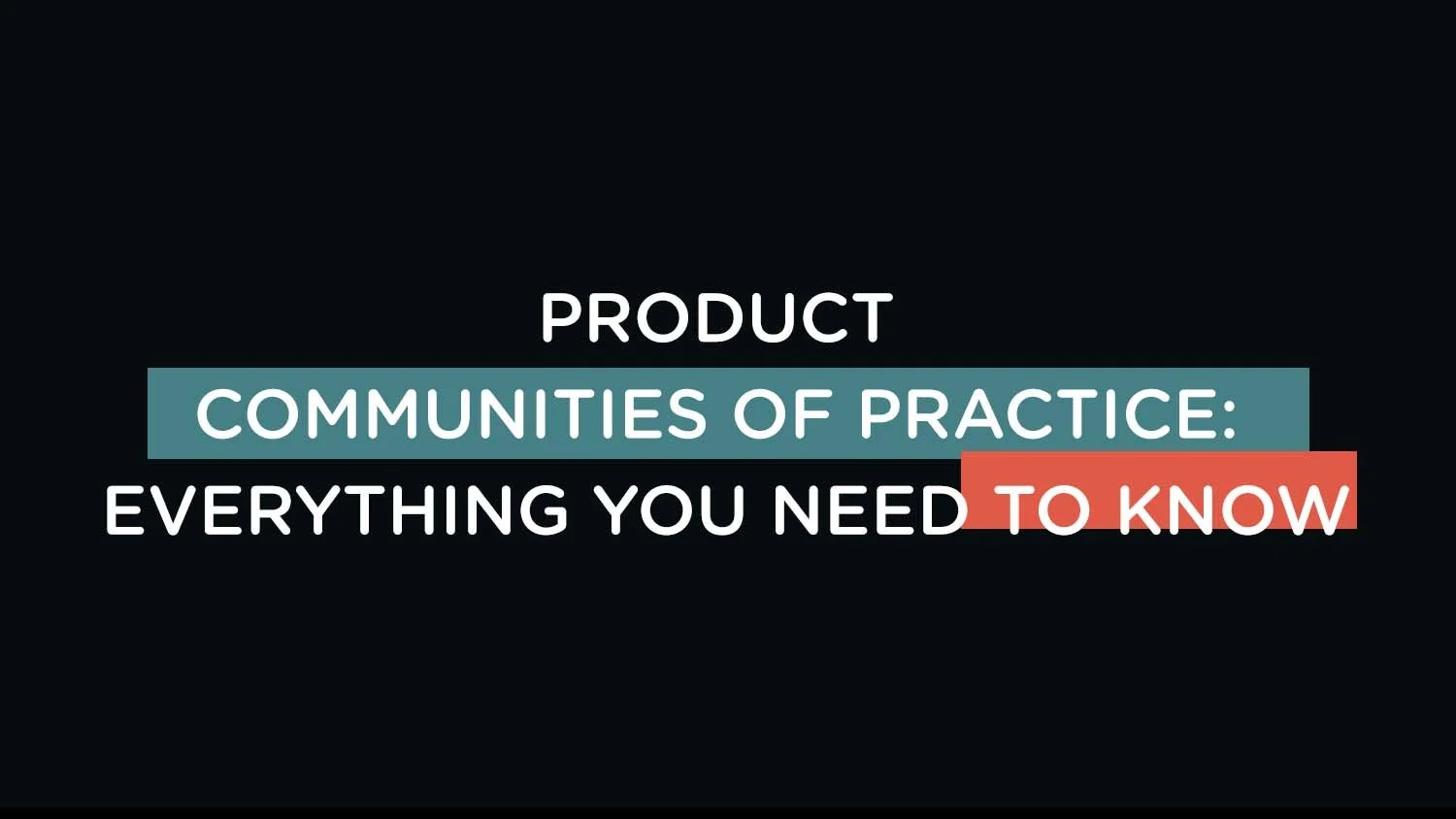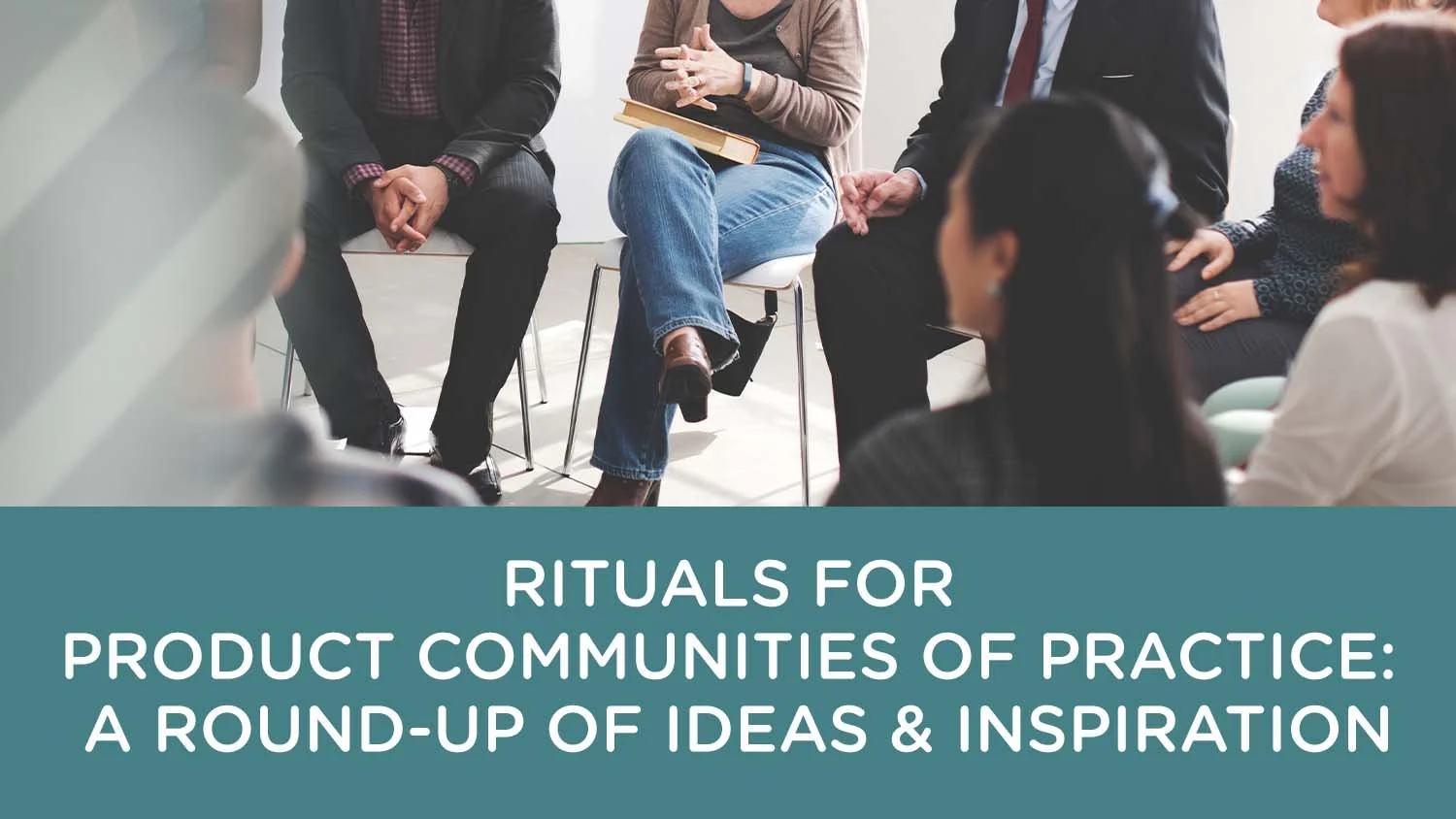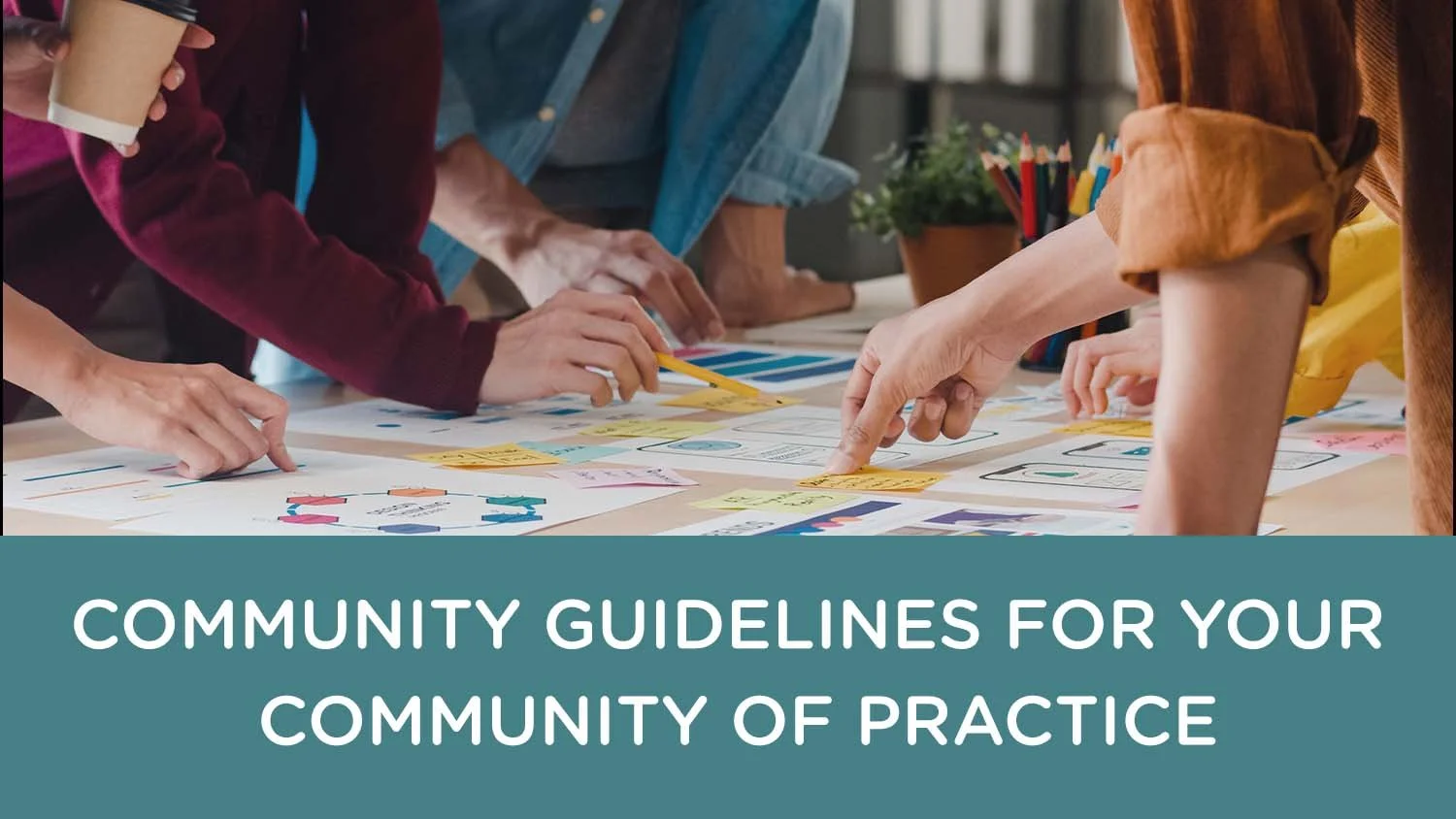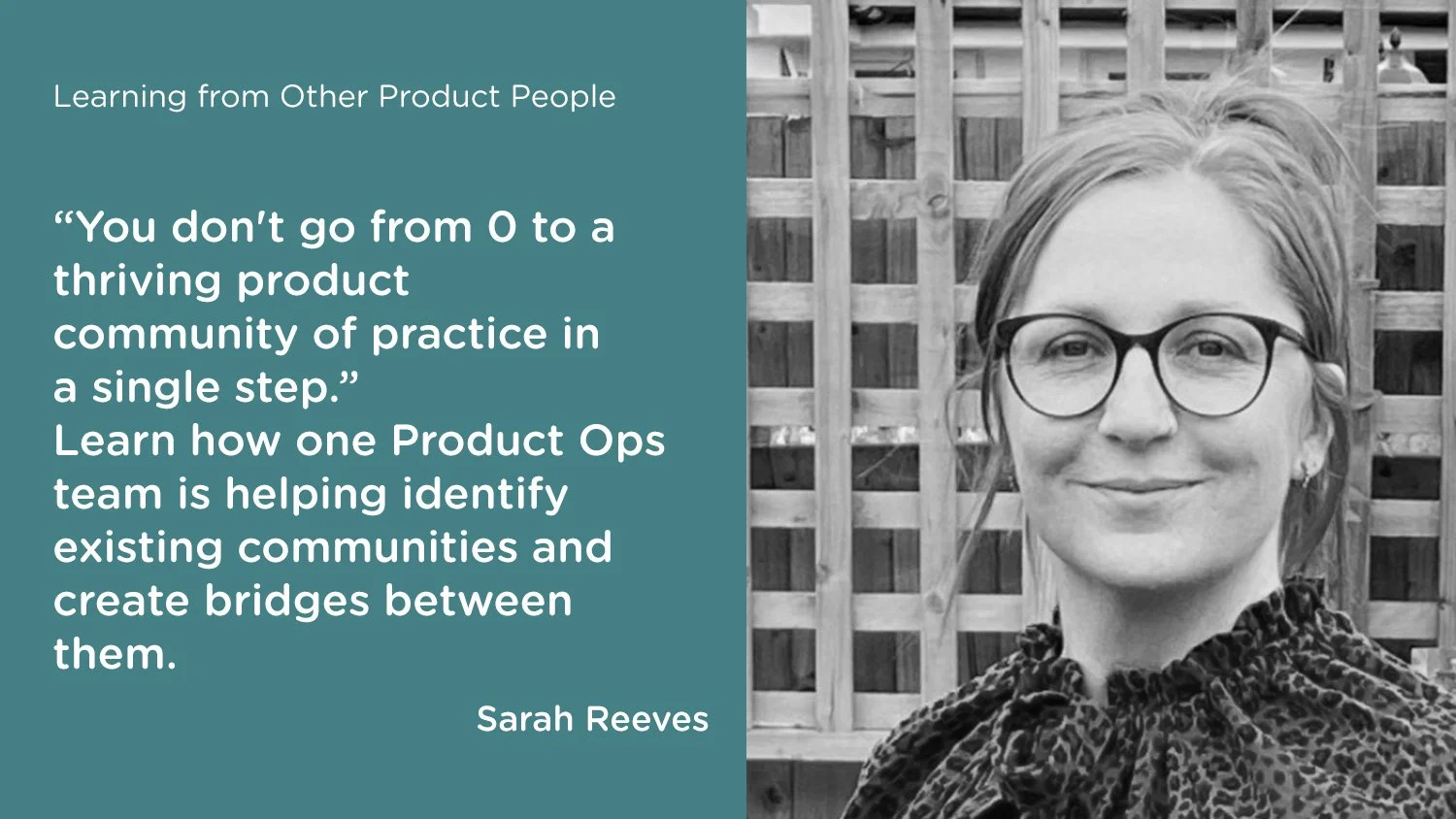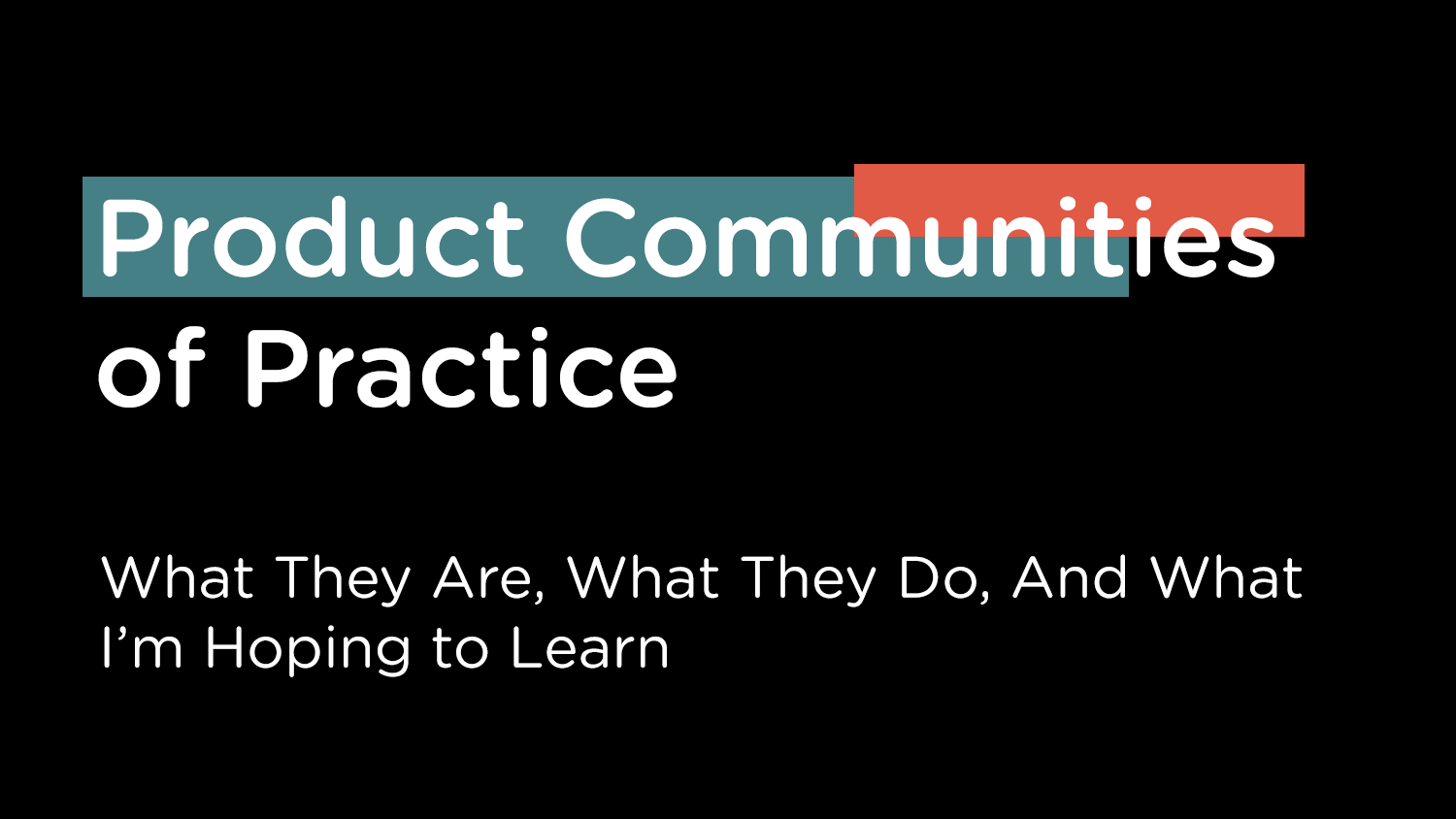
Want to launch a product Community of Practice? Start here!
A Community of Practice (CoP) helps your product people share best practices, understand how your organization works, know how to approach professional development, and much more.
If this all sounds good to you, but you’re not sure how to launch a product CoP, which topics to cover in it, or how to curate specific resources, Petra is here to help!
Petra’s Community of Practice package is designed to guide you through the main concepts that will help you set up a successful CoP. During five 90-minute sessions (with a maximum of three participants from your organization), you’ll discuss community topology options (e.g. should your CoP be large, small, specialized, or organized around a special interest?) and work your way through the Community Canvas tool. The topics you’ll cover include:
Purpose & Success Definition
Finding Rituals & Rhythm
Incentives & Sponsoring
Roles, Channel & Plattform
Contents & Curation
By the end of your sessions, you will have an expansive Learning Menu of curated resources (e.g. blogs, books, training courses) that you can share with your CoP.
Still wondering if a CoP is right for your organization? Here are a few reasons why companies should consider starting a product CoP:
Humans love being part of a community (that’s just how we are wired) and we love to share our experiences and expertise as a way of feeling mastery. This means your CoP isn’t just about education—it’s an employee happiness and retention program as well.
People from various teams and departments belong to a CoP, which helps you break organizational silos and promote cross-team alignment.
Nearly any topic related to people development can be addressed in a CoP.
This helps the whole product organization to get better over time. And as a second order effect, the products will get better and more successful over time, too.
Upskilling your product people in CoP events is usually much cheaper than sending them to external trainings, courses, and conferences, which helps you spend less on professional development while making a bigger impact.
And having a vital CoP where people are sharing and helping each other get better at their craft frees up some time on the line management folks’ calendars because the responsibility of people development is no longer only on the single PM and their line management. It’s a shared responsibility among the CoP.
Articles from my Blog on the Community Topic
This article might seem like a departure from my usual tips for product leaders and product managers, but I’d encourage you to give it a read if you’ve ever participated in a conference or community and you’re looking for ways to advance your career. I’m sharing some of my observations and hopes for the wider product community and the role we can all play in its success.
What’s the secret sauce for a thriving product Community of Practice (CoP)? While there are many ingredients in the recipe—which can include things like clear guidelines and regular rituals—one of the most critical ones is the sponsor. Like the customer who orders a dish (and pays for it) in the restaurant, the sponsor provides the reason for a community to exist and supplies the resources for it to be successful.
I’m thrilled to announce that my new book, Strong Product Communities is now out! If you’d like to just go ahead and grab your copy, you can do so here. But if you’d like to learn a bit more about the story behind the book and what to expect from it, you’ll find that information below.
When you work in product, there’s never a dull moment. You’re always learning and growing, whether you’re developing your core product skills, enhancing your understanding of your customers, or helping your team evolve and grow. So it’s no wonder that product people are often asking questions like: What should I learn to get better at my job? How do we scale people development? How do we evolve our product culture?
In the early stages of product Communities of Practice (CoPs), you simply need to provide the time and space for people to gather and share knowledge. But eventually, as your CoP matures and grows larger, you’ll probably want to establish some regular rituals, whether it’s meetings, workshops, casual get-togethers, or places to share information. Good rituals are like glue: They hold things together and provide a certain rhythm to community activities.
When maturing a Community of Practice (CoP), you might want to create community guidelines that encourage freedom of speech but prevent the spread of disinformation and ensure your community is a safe place to share and learn together. But how do you know what to include? For this post, I have three examples of CoP guidelines you can steal (use exactly as they are written) or simply use as inspiration.
In this post, you’ll have the chance to comb through the results from the survey respondents who participate in cross-organizational CoPs. These are CoPs that are offered by a person, company, or entity outside of your employer. For these types of CoPs, members generally choose to participate and may even need to pay a fee for their membership.
In this post, you’ll have the chance to comb through the results from the survey respondents who participate in company internal CoPs. As it is likely super boring for you to go through all the answers in detail, I’ve aggregated similar answers and each bullet point summarizes them. The examples in parentheses are quotes so that you get an idea of exactly how people were phrasing things.
I dedicated a large portion of 2022 to learning all about product Communities of Practice (CoP). My research involved two main activities: conducting in-depth interviews with CoP leaders/organizers and running a survey of CoP participants. The survey results were such a treasure trove of information that I couldn’t fit it all into a single blog post….
2022 is almost over, but I have one final Community of Practice (CoP) interview to share with you! This one is a little different since I’ve been working with Sarah Reeves and StepStone to help build out and mature the product CoP. Be sure to check this interview out if you’re especially interested in the early stages of getting a CoP up and running.
Throughout 2022, I’ve been conducting interviews with people who lead and participate in product Communities of Practice (CoP). I’m excited to share the next installment in my series, featuring Priya Biswas, Director of Product Management, Business Analysis and Organizational Change Management Practice at ATB Financial.
We’re back with the next interview in our series of discussions with product Community of Practice (CoP) leaders. I’m thrilled to introduce you to Nesrine Changuel, a Product Manager for Chrome iOS, who’s based at Google’s Paris office.
As part of my ongoing research into product Communities of Practice (CoP), I have been conducting interviews with people who organize and participate in these communities, both within their companies and in the larger external product community. In today’s post, you’ll hear from Zainab Arilesere who is the Head of Product at Omnibiz Africa as well as the organizer of ProductTank Lagos.
A CoP will help product people share best practices and ways to solve specific challenges. It will make it easier for product people to understand how your organization works and how to effectively work with others outside the product team. This post talks about how to get started with your product community and it contains tips on how to mature this community over time.
For the next post in the series of interviews about product Communities of Practice, we’ve got a real treat for you! Teresa Torres is a product discovery coach, teacher, and author of the wildly popular book Continuous Discovery Habits. In addition to these roles, she’s also the facilitator of the Continuous Discovery Habits community where product folks from all over the world come to cheer each other on as they build their skills around continuous discovery.
As part of my ongoing research into product Communities of Practice (CoP), I am continuing to interview people who organize and participate in these communities, both within their companies and in the larger external product community. In today’s post, you’ll hear from Patrick Sauerwein, a Technical Product Manager at Deutsche Telekom AG.
One of the goals I outlined in my initial post on “Communities of Practice” was to conduct interviews with product people who are currently involved with Communities of Practice to gather their firsthand accounts.
Today, I’m thrilled to share the first interview with Jennifer Michelmann, Senior Product Manager at XING.
One of the most common questions I got asked in conversations with product people in 2021 was: How do I make sure to learn the right things to do the PM job well? And Product leaders in particular often asked me: How do we scale people development and make sure our overall product culture evolves? And how do we achieve this if our people development budgets are tight?



